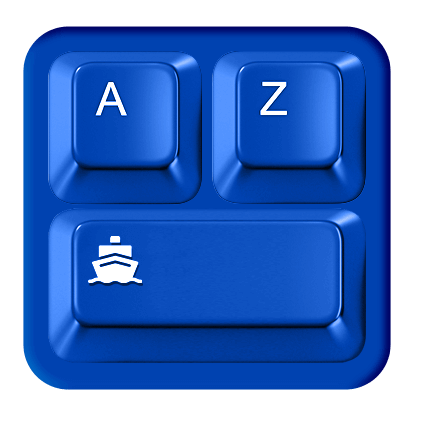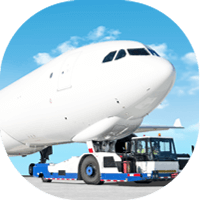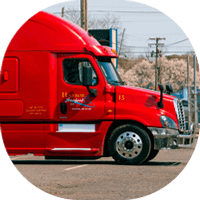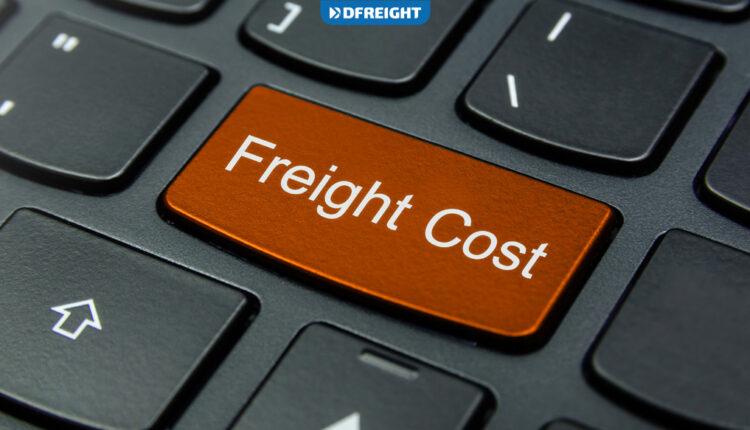| Term | Definition |
| Package | A package is a unit of goods that are bundled together and shipped. A package can be a crate, pallet, wire mesh pallet, roller container, or other loading equipment. A package is usually identified with a unique identifier to be tracked and traced during transport. |
| Packaging | Packaging refers to the enclosing or protecting products for distribution, storage, sale, and use as covering and damage protection. |
| Pallet | A pallet is a flat wooden transport structure that stably supports goods while being lifted by a forklift, pallet jack, front loader, work saver, or other jacking devices. A pallet serves as the structural base of a unit load, enabling efficient handling and storage. A pallet is frequently used to carry goods or shipping containers after loading and securing them with strapping, stretch wrap, or shrink wrap. |
| Pallet Exchange | A pallet exchange is a system where companies that use pallets can swap them with other companies instead of buying new ones. This can be done through a pallet exchange program or a pallet recycling company. |
| Pallet Truck | A pallet truck is a type of forklift used to move pallets of goods. Pallet trucks are available in various sizes and designs and can be powered by either electric or manual power. |
| Pallet wide Container | A pallet wide container is an intermodal freight container wider than a standard ISO container. These containers are typically used to transport heavier loads, and they are specially designed for stowing large quantities of pallets and are often used in conjunction with rail transport. |
| Pallet Wrapping Machine | A pallet wrapping machine is used to wrap pallets in a stretch film to secure and protect them during transport. This type of machine is typically used in warehouses and distribution centers. |
| Paperless Picking | Paperless picking is a system where workers use handheld devices like an electronic shelf display to track inventory and pick items for orders, rather than paper-based methods. This can help reduce errors and increase efficiency in the picking process. |
| Part Load | A part load is a shipment that is bigger than an LTL shipment but cannot fully occupy a truck. |
| Partial Shipment | Partial shipment is a term used in international shipping to describe a situation in which only a portion of the goods ordered by a buyer is delivered. The balance of the order is typically shipped at a later date. |
| Partial Pallet | A partial pallet is a pallet that has been used to ship goods but is not complete. The term can also refer to a pallet that has been damaged and is no longer usable. |
| Passenger Car | A passenger car is referred to as a vehicle with at least two axles, a driver, and typically four wheels. It is primarily designed for passenger transit. The majority of passenger automobiles are motorized vehicles used for public transportation. |
| Peak Season Surcharge (PSS) | A peak season surcharge is an additional fee that a company may charge during high demand for its products or services. The surcharge is typically a percentage of the base price and is added to the total cost of the product or service. |
| Permanent Pallet | A permanent pallet is a pallet that is designed and built to be used multiple times. Permanent pallets are typically made of more robust materials than disposable pallets. They may have features that make them easier to use, such as forklift pockets or anti-slip surfaces. |
| Person-to-Goods | Person-to-goods refers to the process of selling goods to customers. This can be done in person, online, or over the phone. It is a type of order picking where the order picker remains in one position while the ordered goods are brought to him through a system. |
| Pick & Pack | Pick and pack is a kind of order fulfillment. In pick and pack fulfillment, businesses receive orders, pick the products from inventory, and pack them for shipment. |
| Pick-by-Light | Pick-by-Light is the paperless approach for sorting and assembling products. Orders and quantity are transmitted via a compartment display directly connected to the picking compartment, which is how the picking is done. A light will illuminate the container housing the order to indicate its location, number, and quantity. The operator turns off the light as a sign of picked orders when the order is picked. |
| Pick-by-Vision | A pick-by-vision system is a warehouse management system that uses computer vision to track inventory and guide workers to the correct items. |
| Pick-by-Voice | Pick-by-voice is a voice-directed picking system in which the operator is given instructions via a headset and then responds by speaking into the headset to confirm that the correct item has been picked. |
| Pick-up | Pick-up is a common term used in the trucking industry to refer to picking up a load of freight from a shipper. |
| Pick-up Time Window | A pick-up time window is when a driver will arrive to pick up a shipment. This time is typically one hour. |
| Picker | A picker is an employee who assembles sales or production orders for processing and delivery. |
| Picking | Picking refers to the process of collecting customer orders from the shelves and preparing them for shipping. |
| Picklist | A picklist is a document that includes a list of picking products assembled to complete a customer order. The picklist displays information about the ordered products, such as the quantity, storage location, and customer-specific notes. |
| Piggy back Transport | Piggyback transport is a type of shipping in which one mode of transportation is used to carry another. For example, a truck may be used to carry a train car on its flatbed. This allows the train car to be transported to a different location without using its locomotive power. |
| Pilferage | Pilferage is the act of stealing, especially in small quantities. |
| Piracy Risk Surcharge (PRS) | Piracy Risk Surcharge (PRS) is an additional surcharge assessed by ocean carriers on shipments moving through areas where piracy is a risk. This surcharge is used to offset the increased costs associated with operating in these areas, such as the cost of hiring armed security guards. |
| Place of Destination | The place of Destination is the acknowledged spot where a package is supposed to show up. The transport business or carrier has completed its delivery obligation if the shipment arrives at the designated delivery location. |
| Place of Origin | Place of origin describes the initial location where a shipment is anticipated to be picked up. The site where a carrier accepts shipments from a shipper to be delivered to a predetermined location can also be used to describe it. |
| Port | A port is a place on the coast or coastline with one or more harbors where ships can dock and unload or load passengers or cargo. |
| Port of Discharge (POD) | A Port of Discharge is where a vessel discharges or unloads some or all of its cargo. After that, the shipments are dispatched to their different consignees. |
| Port of Loading (POL) | A Port of Loading is a port or location where cargo is loaded onto a ship, secured, and ready to be transported. POL is another name for the port of exit. |
| Port of Unloading (POU) | A Port of Loading is a port or location where cargo is loaded onto a ship, secured, and ready to be transported. POL is another name for the port of exit. |
| Postage Paid | Postage paid means that the sender of the letter or package has already paid the postage and does not require additional postage from the recipient. |
| Postal Code | A postal code is a code used by postal services to identify a particular geographic area. |
| Prefix | A prefix is a term used in logistics to describe the method of transport used to move goods from one location to another. |
| Prepaid Freight | Prepaid freight is a type of shipping in which the sender pays the shipping charges upfront. This kind of shipping is often used for large or heavy shipments. |
| Procurement | Procurement is the process of finding suppliers, negotiating contracts, and purchasing goods or services. |
| Production | The meaning of production is the process of making goods and services from raw materials. |
| Production Logistics | Production logistics manages the transportation and storage of materials and finished goods within a company. It includes coordinating raw materials, inventory, and finished products to ensure that production processes run smoothly and efficiently. Production logistics also involves the management of transportation and warehousing operations to ensure that goods are delivered to customers on time and in the correct quantities. |
| Production Planning | Production planning is the process of creating a schedule for the production of goods or services. It involves determining what products will be produced, how they will be produced, and when they will be produced. |
| Proof of Delivery (POD) | Proof of delivery (POD) is a document that specifies the date, time, and location that a shipment was delivered. Businesses typically use PODs to track shipments and confirm that the intended recipient received goods. |
| Public Private Partnership (PPP) | A public-private partnership (PPP) is a cooperative arrangement between a public sector agency and a private sector entity. PPPs are often used to finance, build, and operate infrastructure projects and services that are too expensive or complex for the public sector to undertake on its own. |
| Purchasing | Purchasing is the process of acquiring goods or services to be used to produce other goods or services or for resale. |
| Pure Car Carriers (PCC) | Pure car carriers (PCC) are specialized vessels designed to transport large numbers of unprocessed cars. These ships are typically immense. PCCs are outfitted with various lifts and ramps to allow cars to be loaded and unloaded quickly and efficiently. |
| Push Principle | The push principle is that businesses should promote their products and services as aggressively as possible to generate sales. This approach is often used by companies struggling to generate revenue, as it can be an effective way to boost sales. However, it can also be seen as a last resort, as it can alienate potential customers and damage a business’s reputation. |
All shipments in one place
We are with you until the end






